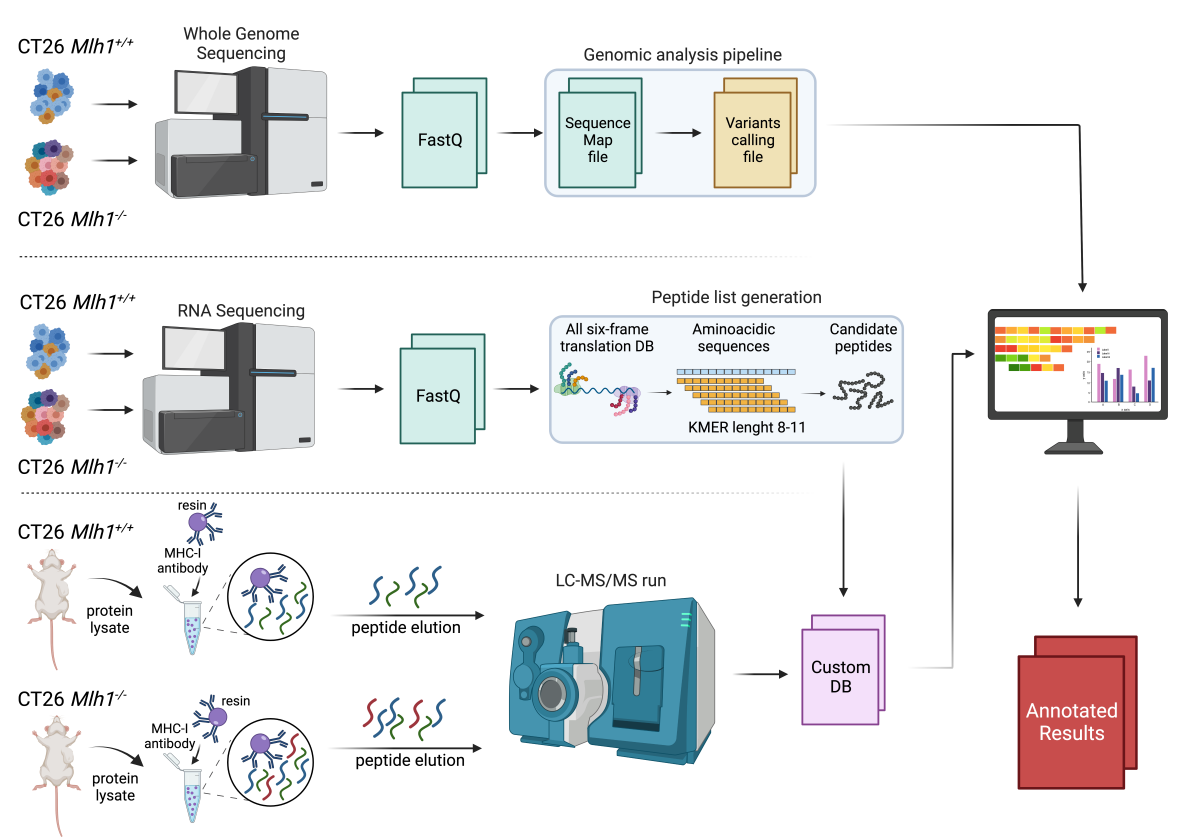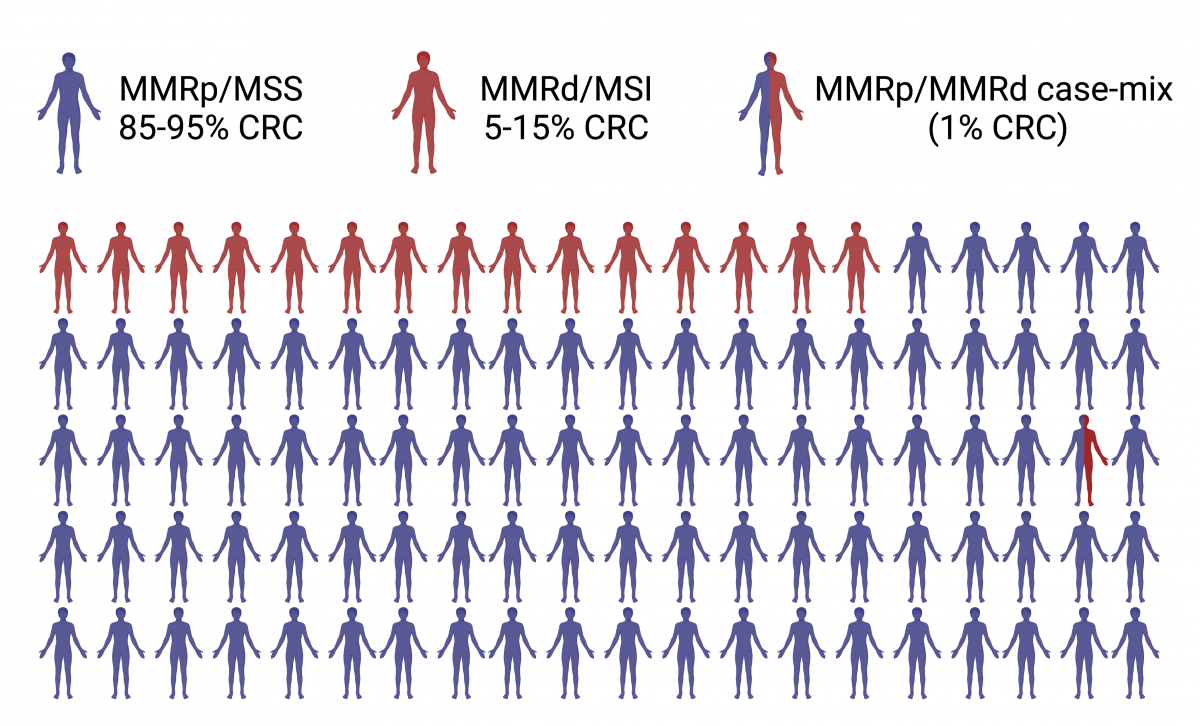Identifying DDR genes whose loss of function renders CRC tumors sensitive to immune checkpoint blockade.
TARGET contributes to defining the connection between DNA repair mechanisms and immune surveillance in CRC. Based on our previous findings (Germano et al), we hypothesize that the alterations in the DNA damage repair (DDR) pathway might be an “eat me signal” detected by immune cells in the presence of immune checkpoint blockades. Exploiting the extensive collection of cell models in our laboratory, we aim to induce cancer vulnerability weakening the efficiency of DDR pathways. To this end, we developed a loss of function CRISPR CAS9 murine library encompassing the mammalian complement of 500 genes involved in almost all DDR pathways. To study how the loss of function of DDR genes triggers an anticancer immune response, we are exploiting murine CRC cell lines and syngeneic mouse models.
Role of non-canonical antigens in the favorable response to immune checkpoint blockade of MMRd tumors
Although the contribution of neoantigens in deciphering the immunogenic features of MMRd tumors has been well described, the extent to which the non-coding regions of the genome affects the immunogenicity of MMRd tumors is largely unknown. Then, we aim to study whether and to what extent MHC class I associated peptides (MAPs), originating from non-coding portions of the genome, might be immunogenic targets of T lymphocytes. We obtained preliminary results applying a comprehensive immune-peptidomic computational pipeline. Our analysis suggests that in MMRd tumors non-canonical translational events across the entire genome, i.e., translation of non-coding and out-of-frame coding regions, can effectively contribute to the immunogenic properties of these tumor types.

(Created with BioRender.com)
The MMRd cellular fraction affects the growth of MMRd/MMRp heterogenous tumors in pre-clinical models
Since the majority of CRC patients are immune refractory, we are currently studying whether among these patients some of them could be eligible for immune based therapies. As a matter of fact, recent findings concerning immunohistochemical staining and molecular profiling of CRC tumors pinpointed the coexistence of MSS/MMRp and MSI/MMRd cancers cells in the same tumor lesion in 1% of CRC patients (Loupakis et al). Intrigued by these findings, we generated a preclinical model of MMR heterogeneity, blending Mlh1+/+ and Mlh1-/- colorectal cancer murine cells at different ratio. Notably, tumor growth delay and tumor rejections occurred in Mlh1+/+ Mlh1-/- mixed tumors and increased when the percentages of Mlh1-/- cells was augmented in the mixed population. Overall, the observation that a MMRp tumor harboring a small fraction of MMRd cells can trigger an effective antitumor immune response might have implications for the rational design of clinical trials for tumors recalcitrant to immunotherapies

(Created with BioRender.com)
Development and refinement of MMR inhibitors
NeoPhore is generating a series of lead compounds capable of selectively and specifically blocking PMS2. These molecules have been transferred to the Bardelli’s laboratory at the University of Torino for functional testing in preclinical models. We are currently treating CRC mouse and human preclinical models with different schedules of the NeoPhore’s lead compounds. To monitor the effect of MMR inhibitors we are evaluating tumor mutational burden by whole exome sequencing.
